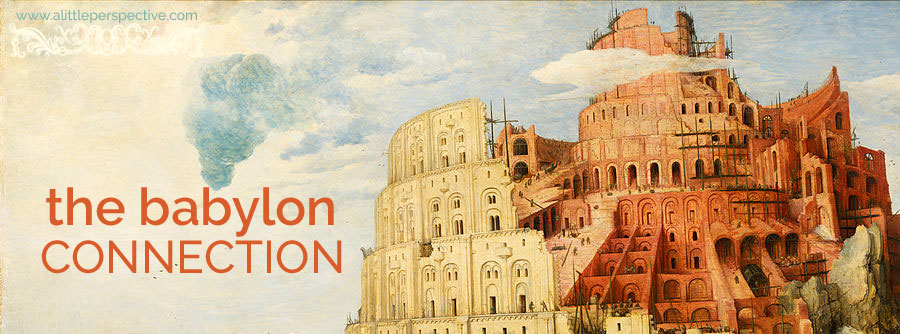the babylon connection
the babylon connection, part two
the babylon connection, part three
The next detail Josephus brings out about Nimrod and the Tower of Babel is that Nimrod changed the government of the city of Babel into a tyranny, so that men were in constant dependence on his power. The purpose of the tyranny was to turn the hearts of men from the fear of God.
Now why would this be necessary? Jesus said that no man can serve two masters. A man who fears and serves God will not fear and serve a man contrary to God. Remember, Nimrod is wanting to keep the people in his kingdom to serve him, in rebellion against God who wanted the people to spread abroad from Shinar. So according to Josephus, Nimrod saw that in order to succeed in his rebellion of keeping the people there, he would have to turn their hearts from fearing and serving God.
Now the purpose of the tower makes sense. The people must have objected to leaving off serving the Lord, and disobeying His command, by saying to Nimrod that God’s judgment follows rebellion. They were only five generations from Noah’s Flood. Nimrod’s response to this objection, was to build a tower so high that no matter how high future flood waters came, the people could escape the flood at the top of the tower.
I believe Scripture confirms this:
“And they said one to another, Go to, let us make brick, and burn them thoroughly. And they had brick for stone, and slime [bitumen] had they for mortar. And they said, Go to, let us build us a city and a tower, whose top may reach unto heaven.” Gen 11:3-4
Put a dried clay brick into a tub of water and wait, and it will eventually dissolve. Put a burned (or baked) clay brick into a tub of water and wait, and it will still be a clay brick, no matter how long you wait. They burned the brick thoroughly to waterproof them. Then they mortared them together with bitumen. Why this detail in Scripture?
Wikipedia says of bitumen: “Bitumen is primarily used for paving roads. Its other uses are for general waterproofing products.” Interestingly, Wikipedia also says of Sumerian architecture: “The Tigris-Euphrates plain lacked minerals and trees. Sumerian structures were made of plano-convex mudbrick, not fixed with mortar or cement.” Mortar was not used when the first people who dwelt in Shinar — who archaeologists say were the Sumerians — made their buildings out of mudbrick. But Scripture tells us that when the people constructed this tower, they used bitumen for mortar. They did something they didn’t normally do, because they were seeking to ensure the waterproof character of this particular building.
the babylon connection, part five
the babylon connection, part six
the babylon connection, part seven
the babylon connection, part eight
the babylon connection, part nine
the babylon connection, part ten
the babylon connection, part eleven
the babylon connection, part twelve
the babylon connection, part thirteen
the babylon connection, part fourteen
the babylon connection, part fifteen
the babylon connection, part sixteen
